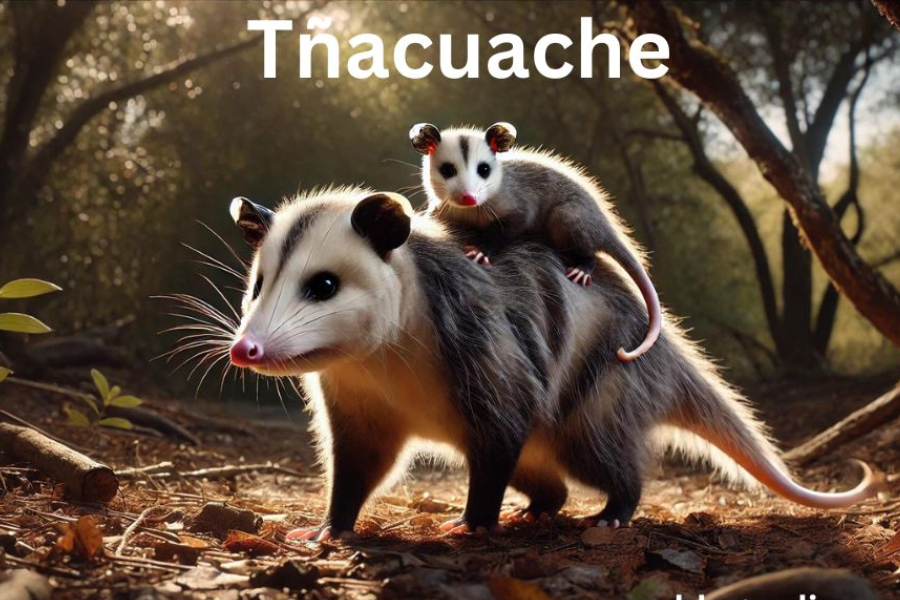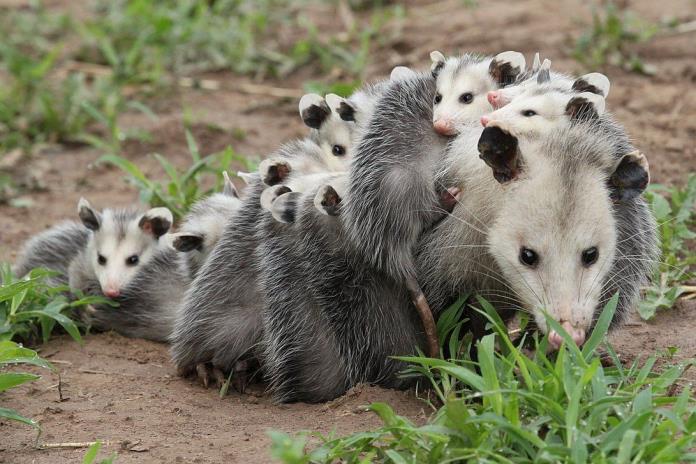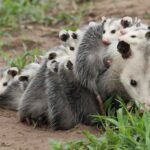If you’ve ever spotted a small, furry creature rummaging through your garden or climbing a tree, you might have seen a tñacuache. This charming animal, often associated with Latin America, has intrigued many due to its distinctive appearance and behavior. But what exactly is a tñacuache, and why should we care about it? In this article, we’ll delve into the fascinating world of the tñacuache, exploring its habitat, diet, defense mechanisms, and its role in the ecosystem.
What is a Tñacuache?
The term “tñacuache” is a regional name used in parts of Latin America to describe a type of opossum. Scientifically known as Didelphis, these creatures are marsupials, which means they carry their young in a pouch. Tñacuaches are known for their unique physical characteristics: a pointed face, sharp teeth, and a long, prehensile tail that assists them in climbing and grasping objects.
Typically, tñacuaches have gray fur, although some may have white patches or variations in color. Their tails are often bare, adding to their distinctive appearance. The tñacuache’s adaptability is one of its most interesting traits. It can thrive in a variety of environments, from dense forests to bustling urban areas.
Where Do Tñacuaches Live?
Tñacuaches are native to Central and South America. They are highly adaptable creatures, which allows them to inhabit a wide range of environments. Their natural habitat is the forest, where they can easily find food and shelter among the trees. However, their adaptability extends to urban and suburban areas, where they often forage in gardens, parks, and even garbage cans.
These nocturnal animals are most active during the night. Their nighttime activities include searching for food, climbing trees, and seeking safe places to rest. Due to their nocturnal nature, they are not commonly seen during the day, which adds to their elusive charm.
What Do Tñacuaches Eat?
Tñacuaches are omnivores, meaning their diet includes both plant and animal matter. Their dietary flexibility is one of the reasons they can thrive in diverse environments. In the wild, their diet consists of fruits, insects, small animals, and sometimes even small reptiles. They are also known to scavenge for human food, which they often find in garbage cans or compost piles.
One of the ecological benefits of tñacuaches is their role in controlling pest populations. By eating insects and small rodents, they help to keep these populations in check, which can prevent the spread of diseases and damage to crops. This pest control service contributes significantly to maintaining a balanced ecosystem.
How Do Tñacuaches Protect Themselves?
Despite their small size, tñacuaches have developed some remarkable defense mechanisms to protect themselves from predators. One of their most well-known strategies is “playing dead.” When a tñacuache feels threatened, it may fall over, appear lifeless, and even emit a foul odor to simulate the presence of decay. This behavior, known as “playing possum,” often deters predators who are not interested in eating something that seems dead.
In addition to this dramatic defense mechanism, tñacuaches are skilled climbers. Their strong claws and prehensile tail allow them to quickly ascend trees and find safety in high places. They also use their climbing abilities to escape from potential threats and find shelter in tree hollows or dense foliage.
Are Tñacuaches Dangerous?
Tñacuaches are generally not dangerous to humans. They are shy animals that prefer to avoid contact with people. While they may exhibit aggressive behavior if cornered or threatened, they are not known to be aggressive by nature. Their sharp teeth and hissing sounds might be intimidating, but these are typically defensive rather than offensive.
It’s important to remember that tñacuaches are wild animals. As such, they should be respected from a distance. Attempting to handle or approach them can lead to defensive reactions, including bites. If you encounter a tñacuache near your home, it’s best to observe it from afar and avoid any direct interaction.
Why Are Tñacuaches Important for the Environment?
Tñacuaches play a crucial role in their ecosystems. Their diet helps to regulate insect and rodent populations, which can have positive effects on agriculture and human health. By controlling pests, they reduce the likelihood of crop damage and the spread of diseases.
Another significant ecological role of tñacuaches is their contribution to seed dispersal. When tñacuaches consume fruits, they often carry seeds away from the parent plant. These seeds are then deposited in different locations through their droppings. This natural seed dispersal helps in the growth and spread of new plants, which is beneficial for maintaining healthy and diverse ecosystems.
How to Help Tñacuaches Live Safely
If you live in an area where tñacuaches are common, there are several steps you can take to ensure their safety and well-being. One of the most effective ways to help is to manage your waste properly. Tñacuaches are attracted to easy food sources, so keeping garbage cans tightly sealed and not leaving food out can prevent them from scavenging in dangerous areas.
Creating a tñacuache-friendly environment in your yard can also be beneficial. Providing safe spaces such as bushes or trees where they can hide and rest is a good way to support these animals. Additionally, avoiding the use of harmful chemicals or pesticides in your garden will help protect tñacuaches and other beneficial wildlife.
Myths and Truths About Tñacuaches
There are many myths and misconceptions about tñacuaches. Some people believe that they are dirty or dangerous animals, but these beliefs are largely unfounded. Tñacuaches are actually quite clean animals and spend a significant amount of time grooming themselves. They are also less likely to carry diseases such as rabies compared to other wild animals.
Understanding the true nature of tñacuaches can help dispel these myths and promote a more accurate appreciation of their role in the environment. By learning more about these fascinating creatures, we can better understand their contributions to our ecosystems and how to coexist with them harmoniously.
Conclusion
Tñacuaches may be small and sometimes misunderstood, but they are incredibly valuable members of our ecosystems. Their roles in pest control, seed dispersal, and maintaining ecological balance are essential for the health of their environments. Although they might be considered pests by some, tñacuaches are far more beneficial than harmful.
Next time you spot a tñacuache in your yard or local park, take a moment to appreciate its role in the natural world. These adorable creatures, with their unique behaviors and important ecological functions, deserve our respect and protection.



